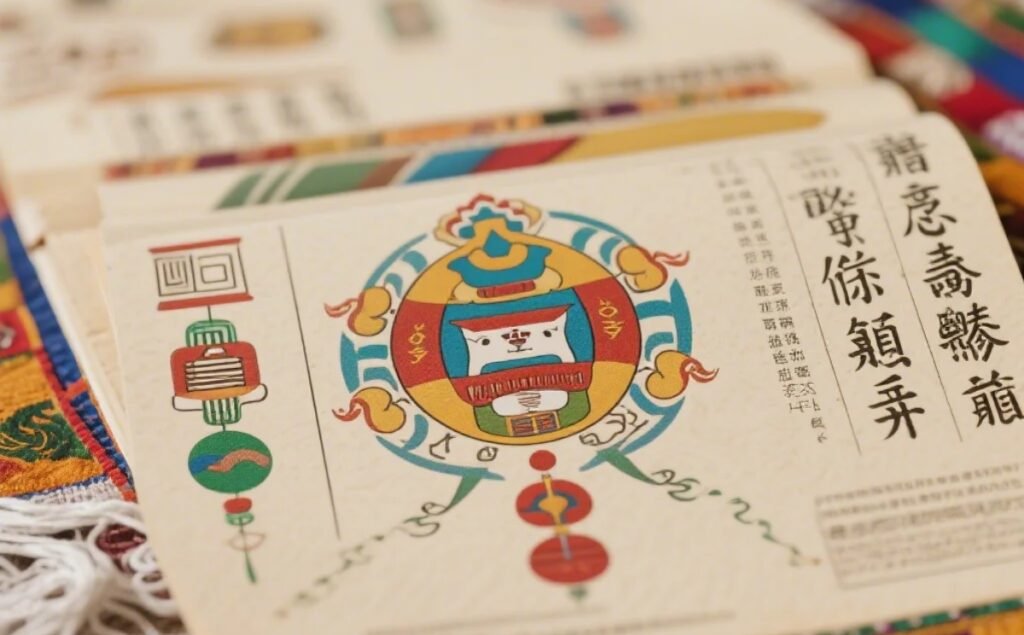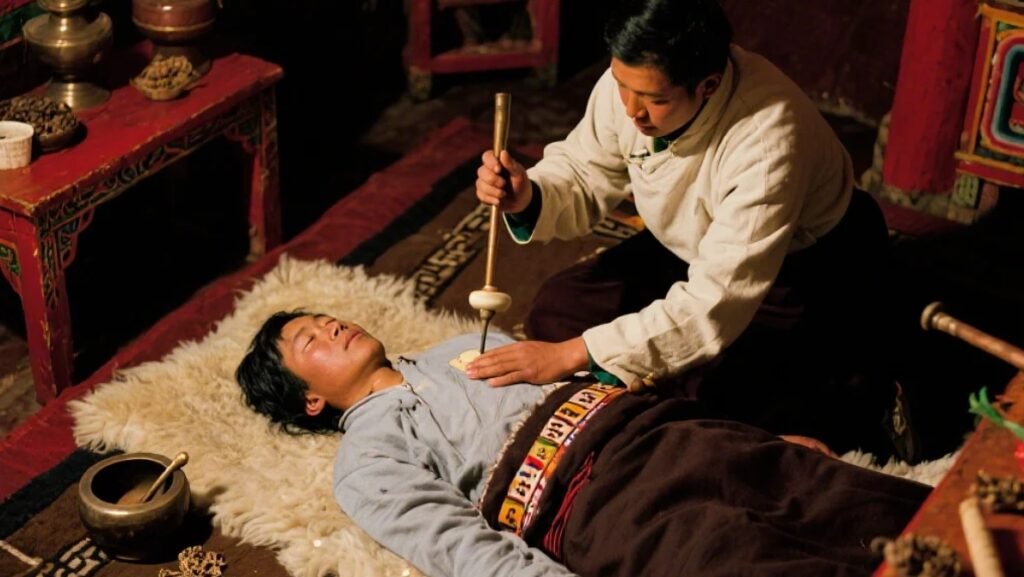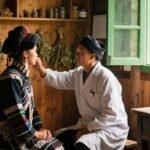Tibetan medicinal bath therapy is a vital component of traditional external treatments in Tibetan medicine. Rooted in classical Tibetan medical theory and supported by the abundant indigenous herbs of the Tibetan Plateau, this therapy uses medicinal liquid as a medium to treat both common and complex diseases. It is known for its long history, broad applicability, clear clinical advantages, and accessibility, and it has become a signature practice within Tibetan medical systems.
The origins of Tibetan medicinal bath therapy are closely tied to the unique natural and cultural environment of Tibetan society. Its development spans centuries of continuous transmission. The Four Medical Tantras (rGyud-bZhi), the most comprehensive and foundational classic of Tibetan medicine, contains the earliest systematic descriptions of this therapy. In particular, the Last Tantra within the text details indications, ingredients, applications, and precautions related to medicinal baths. It emphasizes the effectiveness of this method in treating conditions such as limb rigidity, scrofula, ulcers, both acute and chronic wounds, swelling, kyphosis, joint effusion, and other related illnesses.

The text also repeatedly mentions the foundational formula known as “Five-Nectar Decoction” (Nga-lnga bdud-rtsi). The formula’s specific composition was later fully recorded in the treatise “Teachings of the Ancestors”, identifying five primary herbs: juniper, yellow rhododendron, spiraea, Artemisia wellbyi, and Tibetan ephedra. This standardized formula has become the cornerstone for clinical application and individual adaptations in Tibetan medicinal bathing. Over the centuries, influential Tibetan medical texts such as the Eighteen Branches of Tibetan Medicine, Ten Million Relics, and Blue Beryl have further expanded upon the foundations laid in the Four Medical Tantras, greatly enriching the body of knowledge and clinical practices associated with Tibetan bath therapy.
Thanks to this long cultural lineage and deep practical experience, Tibetan medicinal baths have experienced a strong resurgence in clinical settings in recent years. Today, they are central specialties in many Tibetan hospitals and have even been introduced in certain Traditional Chinese Medicine (TCM) institutions. The therapy has shown promising results in treating chronic and complex conditions such as post-stroke syndrome and rheumatoid arthritis. It has gained increasing recognition among medical professionals, cultural researchers, and, most importantly, among patients. The service capacity and influence of Tibetan bath therapy continue to expand, making it one of the most representative Tibetan medical treatments to be recognized on a global scale. In 2018, the Tibetan Medicinal Bathing Therapy was officially inscribed on UNESCO’s Representative List of the Intangible Cultural Heritage of Humanity. This recognition marked it as the second traditional Chinese medicine practice, after acupuncture, to receive such global acknowledgement—ushering in a new phase of development and opportunity.
However, alongside the growing demand for more diverse health services, certain technical limitations of Tibetan bath therapy have gradually emerged. There are inconsistencies in the quality of herbs used in the foundational formulas across different regions due to a lack of standardized sourcing. Concerns remain over whether modern adjustments to the traditional fermentation process may impact efficacy. There is also a lack of high-level clinical evidence supporting its effectiveness for key disease indications. In clinical practice, dosing and efficacy relationships still rely heavily on physician experience. Meanwhile, medicinal bath equipment lacks quantitative control features, making standardization difficult. The therapy’s time-consuming procedures, intensive manual labor requirements, and complexity in operation make it difficult to integrate into high-volume hospital settings, thus affecting its broader adoption and scalability.
The development of this therapy has benefitted from the support and guidance of many respected figures in Tibetan medicine. Gratitude is extended to Master Physician Zhandui, former director of the Tibet Autonomous Region Tibetan Hospital; Mingzhu, deputy chief physician of Shannan Tibetan Hospital and representative inheritor of the UNESCO-recognized therapy; Baima Yangzhen, current president of the Tibetan Hospital; Zhuoma, chief physician and director of the Medicinal Bath Department; and Sonam Tsedan, director of the Bath Department at the Qinghai Tibetan Hospital. Deep appreciation also goes to the entire team at the Yangbajing Rheumatism Research Base for their outstanding contributions to Tibetan medicinal bath development.
The Qinghai-Tibet Plateau, with its towering mountain ranges, glaciers, rivers, lakes, and hot springs, is widely known as the “Water Tower of Asia”—the source of many of Asia’s great rivers. This unique hydrological landscape has nurtured a rich water-centered culture. From ancient times, Tibetan communities have thrived in this environment, developing a deep understanding of water’s value in health and healing. Tibetan bath therapy is a direct expression of this long-standing cultural relationship with water.
From a contemporary perspective, the history and evolution of Tibetan medicinal baths can be summarized in three major phases:
1. From Spontaneous Practice to Systematic Inheritance
Tibetan ancestors, through generations of life and healing practices, gradually came to understand the vital role of water in sustaining health. By the 4th century CE, a cultural norm of “bathing every five days” had already formed. Dunhuang Tibetan manuscripts also document many bath-based health practices during the Tubo period. These traditions were ultimately synthesized in the Four Medical Tantras, where over 50 chapters detail more than 40 medical conditions treated using medicinal baths. This text laid the theoretical and practical foundation for the therapy and marked its formal establishment.

2. From Dispersed Practices to a Systematized Technology
Tibetan medicinal bath techniques originally drew from natural hot spring therapies, but due to limitations of natural sources, Tibetan physicians began formulating their own medicinal liquids. This gave rise to the core “Five-Nectar Decoction”, which has since formed the backbone of the therapy’s formulation system. A fermentation-based production process was developed, and clinical practice evolved to include three major types of medicinal bathing. To date, over 120 bathing formulas involving more than 260 different Tibetan herbs have been reported in Tibetan medical institutions. As a result, the key technical components of Tibetan bath therapy are now largely standardized and process-driven.
3. From Subjective Traditions to Objective Standards
Based on generations of clinical practice, Tibetan bath therapy has formed a unique internal standard system that includes sourcing criteria for medicinal herbs (location, age, part used), evaluations of the medicinal liquid (color, aroma, texture), and operational parameters such as temperature, duration, and procedure. These traditional standards, once qualitative and experience-based, are now gradually evolving toward quantifiable, objective benchmarks. The ancient practice of Tibetan medicinal bathing is transforming to meet modern healthcare needs.
Despite international recognition, Tibetan medicinal bath therapy still faces several gaps in aligning with global standards:
Lack of a Unified Standard System
There are multiple interpretations and versions of even the core herbs in the “Five-Nectar Decoction.” Clinical use often depends on expert opinion, and the impact of variables like botanical source, harvest timing, and storage on (used in traditional contexts) outcomes remains unclear.
Fermentation procedures lack consistent guidelines. Factors such as duration, environment, temperature, and ratio vary across regions.
There are no objective, universally accepted standards to assess the quality of medicinal liquids. Traditional sensory evaluations are highly subjective and not suitable for dose-response research.
Insufficient High-Quality Clinical Evidence
While some clinical reports affirm the effectiveness of Tibetan medicinal baths, most evidence remains preliminary. Of the 169 clinical studies included in a recent analysis (covering 30 diseases), the majority focus on rheumatoid arthritis and skin conditions. However, few studies meet the rigorous standards required for international recognition. More scientifically designed trials with standardized outcome measures are urgently needed.
Lack of Modern Product and Equipment Support
As of December 2020, only 10 Tibetan medicinal bath products had received official approval in China—mainly granules, powders, and washing agents. There is a clear lack of diversity in product forms.
Most institutions still rely on traditional wooden, acrylic, or metal bathtubs. Some have introduced herbal steaming devices, but no intelligent equipment has been designed specifically for Tibetan bath therapies, limiting their scalability and standardization.
These challenges are closely tied to the current lack of scientific infrastructure and the early stage of innovation in Tibetan bath research. To move forward, it is essential to promote interdisciplinary collaboration—combining research approaches from pharmacognosy, systems biology, medicinal analysis, network pharmacology, evidence-based medicine, and biomedical engineering. This would help address key technical bottlenecks such as standardizing medicinal liquid quality, optimizing fermentation processes, improving production protocols, and developing intelligent equipment. By systematically integrating clinical and laboratory data, researchers can advance new products and ultimately establish a comprehensive, modernized standard system for Tibetan medicinal bath therapy.



Leave a Reply